
Dynamics of Xylem Water Release
Plant Physiology, Plant Physiology: On The InsideThe water transport system of woody plants can experience periods of excessive xylem tension. It is generally assumed that during these times, water stored in capacitive tissue moves into the transpiration stream and buffers the liquid tensions that develop inside the vessel lumen, thereby protecting…
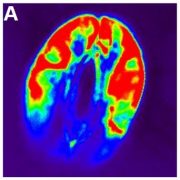
Plasmodesmatal Structure and Function
Plant Physiology, Plant Physiology: On The InsideThree types of phloem loading have been defined in plants: 1.) “active apoplasmic” loading, in which sugar transporters are responsible for the active uptake of sugars into the sieve element companion cell complex (SECCC) which is believed to be symplasmically isolated; 2.) “passive symplasmic”…
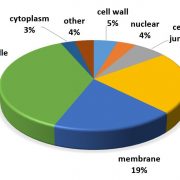
The Unfolded Protein Response and Plant Development
Plant Physiology, Plant Physiology: On The InsideThe unfolded protein response (UPR) is a cellular stress response involving the endoplasmic reticulum (ER). The UPR is activated in response to an accumulation of unfolded or misfolded proteins in the lumen of the ER. However, ER stress can also be induced in the absence of external stressors,…

Identification of Leaf ER Bodies in Arabidopsis
Plant Physiology, Plant Physiology: On The InsideEndoplasmic reticulum bodies (ER bodies) are endoplasmic reticulum-derived organelles specific to the order Brassicales that are thought to play a role in plant defense against biotic factors. ER bodies are generally classified into two types: 1.) constitutive ER bodies that are found in the epidermal…

Phosphate Starvation Alters Root Calcium Signatures
Plant Physiology, Plant Physiology: On The InsidePlant roots foraging in the soil have to sense, transduce, and respond to fluctuations in water and nutrients plus a multitude of stresses to which they may be subjected. Biotic and abiotic stresses (including mechanical, salt, osmotic, and oxidative stress) trigger rapid and transient modulations in…
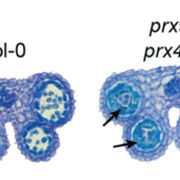
Peroxidases prevent tapetum swelling and pollen degeneration
Research, The Plant Cell, The Plant Cell: In a NutshellJacobowitz et al. identify two enzymes essential for anther development.
Plant Cell https://doi.org/10.1105/tpc.18.00051
By Joseph Jacobowitz, MIT/Whitehead Institute for Biomedical Research
Jing-Ke Weng, MIT/Whitehead Institute for Biomedical Research
Background: Just like all organisms,…
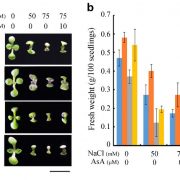
Ethylene and ABA Regulate Ascorbic Acid and Reactive Oxygen Species
Plant Physiology, Plant Physiology: On The InsideThe phytohormones ethylene and abscisic acid (ABA) often interact in controlling plant growth and development processes as well as plant responses to stress. The detailed mechanisms underlying the interaction of these two phytohormones, which may act synergistically or antagonistically with each other,…
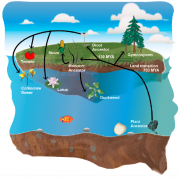
Convergent gene loss in aquatic plants predicts new components of plant immunity and drought response (bioRxiv)
Plant Science Research WeeklyPlants transitioned from water to land around 450 Million years ago. Since their emergence onto land, there have been at least a few reversion events to aquatic environments (e.g., duckweed, humped bladderwort). These big evolutionary events imply adaptation to completely different kinds of biotic and…
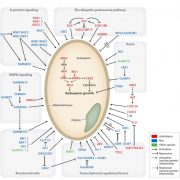
Review: Molecular networks of seed size control in plants ($) (Annu Rev Plant Biol)
Plant Science Research WeeklyCrop yield is largely determined by the size of seeds, and studies are being conducted to understand the complex molecular network controlling the seed size. Li et al. review the possible molecular mechanisms and regulatory networks underlying seed size control and growth, including the factors originating…

